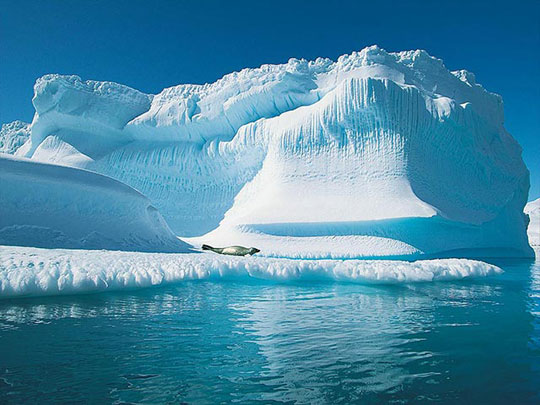The transformation of climate and weather conditions in the Arctic is almost irreversible and the entire region is turning to a new climate.

Illustration. (Internet source)
The affirmation was issued by the NOAA in a report prepared with the participation of experts from Russia, Denmark, Canada and Germany, and published on October 22.
The report stated a record high temperature in the Arctic part of Canada and Greenland, the area of summer ice cover decreased, the snow area fell by record due to certain weather conditions in the Northern Hemisphere as proof said above.
There are data showing that the effects of high temperatures in the atmospheric downstream layers have led to changes in the atmospheric circulation in the Arctic as well as at the average latitudes of the Northern Hemisphere.
Winter 2009-2010 shows new relationships between unusually low temperatures in snowy weather at moderate latitudes with changes in wind circulation diagrams in the Arctic - called the " North " model. Extremely warm - cold continent . "
The area of icebergs in the Arctic in September 2010 reached its third lowest level since conducting satellite tracking in 1979. In addition, there was a decrease in the permanent ice area. At the Buot Sea.
According to scientists, the ocean water surface is still much less salt than in the 1970s.
In the Canadian basin, scientists noted a significant increase in the amount of acidic acids dissolved in the surface layers of water, causing water to have a higher acid concentration, jeopardizing good bone organisms. calcium shell.
In addition, warming also led to the sea creatures in the Arctic gradually being overwhelmed by the species of near-Arctic, which does not depend on the ocean ice layer.
Data on weather conditions on the continent confirm that warming in the Arctic leads to a significant increase in temperature fluctuation over time and region.
The rise in temperature led to an increase in the number of fires in many areas, warming also caused the melting of permanent glaciers.
According to the report, in the Arctic, glaciers continue to be destroyed. For example, in Greenland, the ice area is falling at 120 km 2 per year.
 Is the magnetic North Pole shift dangerous to humanity?
Is the magnetic North Pole shift dangerous to humanity? Washington legalizes the recycling of human bodies into fertilizer
Washington legalizes the recycling of human bodies into fertilizer Lightning stone - the mysterious guest
Lightning stone - the mysterious guest Stunned by the mysterious sunset, strange appearance
Stunned by the mysterious sunset, strange appearance